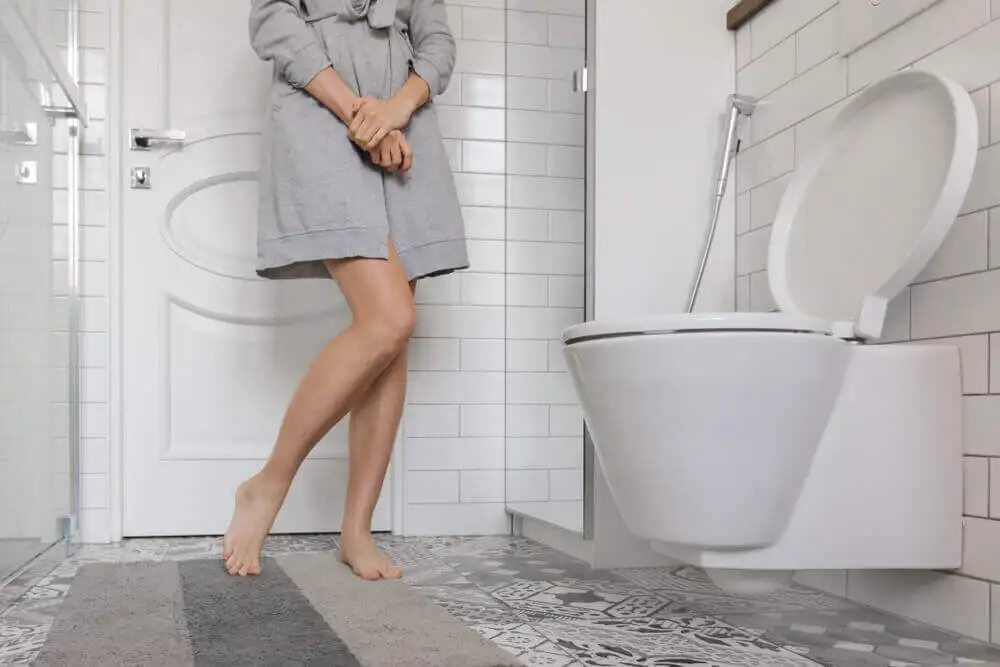Anterior Vaginal Prolapse or Cystocele: Causes and Treatment


Reviewed and approved by the nurse Leidy Mora Molina
Anterior vaginal prolapse or cystocele is a condition in which the bladder drops from its usual position and creates pressure on the walls of the vagina. This is due to the stretching and weakening of the supportive tissues in that area.
There’s no data on the number of women who have this condition. Many of them don’t experience symptoms or don’t consult a physician. That said, it’s estimated that more than half of all women who have given birth have some degree of pelvic organ prolapse.
The condition is also known as anterior vaginal wall prolapse, prolapsed bladder, and dropped bladder. In this article, we’ll focus on the causes and treatment of this condition.
What is anterior vaginal prolapse?
When we talk about the pelvic organs, we refer to the bladder, the uterus, and the intestines. All of these are held in place by the muscles and connective tissues on the pelvic floor.
When these muscles and tissues don’t do their job properly, the bladder can slip out of place. Once this happens, the bladder itself begins to push on the anterior wall of the vagina, and anterior vaginal prolapse or cystocele occurs.
All this causes a feeling of pressure in the pelvis and sometimes a lump in the vagina, which may or may not be felt. There are also often problems with urination, such as difficulty in passing urine, frequent need to go to the bathroom, the feeling of not having completely emptied the bladder, or incontinence.

We think you may also enjoy reading this article: Four Homemade Remedies to Balance Your Vaginal pH
The causes of anterior vaginal prolapse
Anterior vaginal prolapse or cystocele is caused by stretching or weakening of the muscles, tendons, and tissues that hold the bladder in place. Now, why does this happen?
Sometimes it’s just due to the passage of time. With aging, muscles and tendons become more fragile. However, anterior vaginal prolapse or cystocele can occur at any age from chronic strain or trauma.
The most common cause of this condition is labor. It also occurs in people with frequent constipation or chronic cough.
It may also occur after surgery in the pelvic area or in people who have underlying diseases, such as Ehlers-Danlos syndrome.
Like this article? You may also like to read: How to Cure Vaginal Candidiasis with Natural Remedies
Risk factors
It can be said that the main risk factors for developing anterior vaginal prolapse or cystocele are the following:
- Multiple pregnancies
- High birth weight babies
- Vaginal delivery, especially if assisted with instruments
- Menopause (during this stage, estrogen production decreases, which facilitates the loss of tissue elasticity)
- A previous hysterectomy or pelvic reconstructive surgery
- Frequent heavy lifting
- Obesity
Nonsurgical treatments
If the case of anterior vaginal prolapse or cystocele is mild, it may not require a specific approach. Factors such as age, general health, the severity of the condition, a desire to have children in the future, and sexual activity are taken into account to determine the best treatment.
In principle, one can opt for conservative and non-invasive. There are two options: pelvic floor exercises and the use of a vaginal pessary.
Pelvic floor exercises
These are better known as Kegel exercises, which aim to strengthen the pelvic floor muscles. They consist of doing contractions of the muscles in the area, holding them, and repeating them 10 times a day.
A physiotherapist or doctor can teach you the correct way to do them.
Vaginal pessary
The pessary is a rubber or plastic ring that is inserted into the vagina to support the vaginal wall. This provides support for the bladder.
The device does not cure anterior vaginal prolapse or cystocele, but it does provide symptom relief. The device should be removed and cleaned periodically.

Surgical treatment for anterior vaginal prolapse
If non-surgical treatments for anterior vaginal prolapse or cystocele don’t work or the case is very severe, surgery should be considered. The procedure may be a repair of the cystocele, placement of a urethral sling, or both.
Anterior vaginal prolapse or cystocele repair surgery
This surgery is also called anterior colporrhaphy. The goal is to return the bladder to its normal position.
It also tightens the muscles and tissues involved with stitches to prevent further displacement. If incontinence is present, it can be corrected with the same procedure.
Surgery for urethral sling placement
This is another option to correct anterior vaginal prolapse or cystocele. It consists of placing a piece of mesh around the urethra and connecting the ends with the pubis. This mesh is permanent, and its purpose is the same as in the previous case: to return the bladder to its place and prevent it from moving.
Can anterior vaginal prolapse be prevented?
Anterior vaginal prolapse or cystocele as such cannot be prevented, but it is possible to take some measures to reduce the risk of it appearing. The most effective are Kegel exercises, which every woman should practice often.
It’s also advisable to maintain an adequate weight, control chronic coughing and constipation, and lift heavy objects with the correct technique. Surgery corrects anterior vaginal prolapse or cystocele, although in some cases, it does recur.
All cited sources were thoroughly reviewed by our team to ensure their quality, reliability, currency, and validity. The bibliography of this article was considered reliable and of academic or scientific accuracy.
- García López, A. J. (2002). Prolapso de órganos pélvicos. Iatreia, 15(1), 56-67.
- Boggio, G. S. (1975). Tratamiento quirúrgico de la relajación de la pared anterior de la vagina. Revista Peruana de Ginecología y Obstetricia, 21(1-2-3), 167-171.
- Delgado, David, José Grande, and Jorge Salvador. “Colpopexia anterior y uretrosuspensión con monoprótesis en el tratamiento quirúrgico del cistocele e incontinencia urinaria de esfuerzo.” Revista Peruana de Ginecología y Obstetricia 56.1 (2010): 33-39.
- Palma, P., Riccetto, C., Hernández, M., & Olivares, J. M. (2008). Prolapsos urogenitales: Revisión de conceptos. Actas urológicas españolas, 32(6), 618-623.
- Solá, Vicente, Paolo Ricci, and Enríque Guiloff. “Mallas protésicas en el tratamiento quirúrgico del prolapso genital en la mujer.” Rev. Med. Clin. Condes (2005): 168-179.
This text is provided for informational purposes only and does not replace consultation with a professional. If in doubt, consult your specialist.








